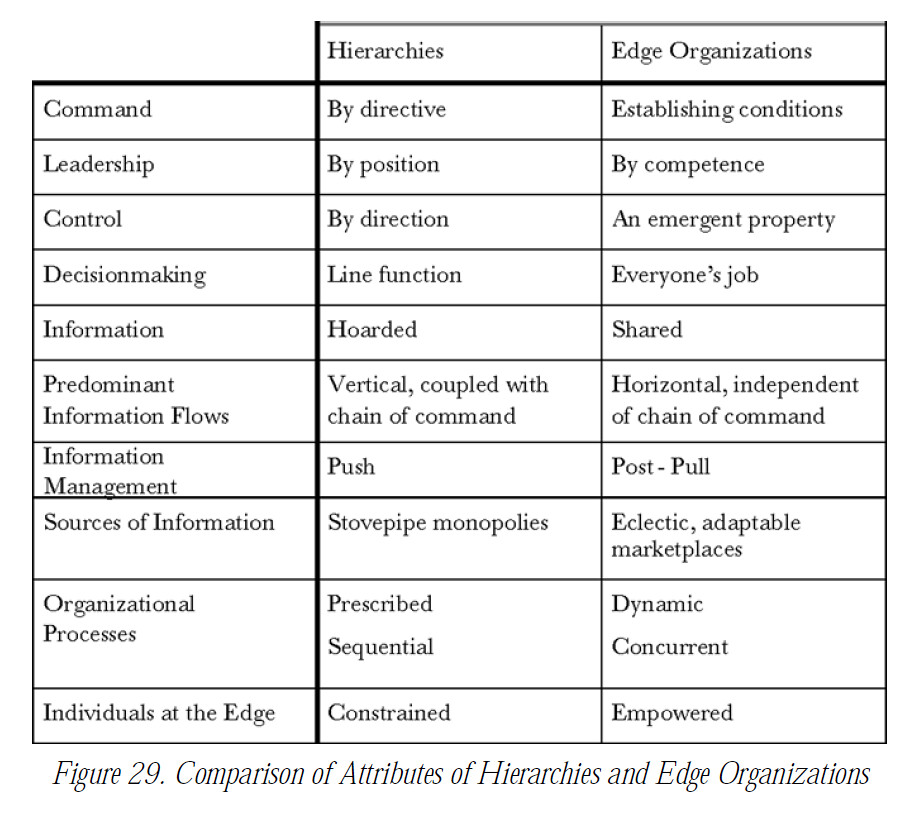 Structure & Organization
Structure & Organization
From the work organization point of view there are 2 approaches with many differences between them: the Hierarchical organization of work (like i.e. the old military organizations) and the Edged organization of work (like i.e. the one of spontaneous online communities).
It is common to have a mix of the 2, a Hierarchical organization optimized for the collaboration. That usually is more flat then deep and more cross-functional then specialized in silos.
The idea again is to find a good mix that have the contextual fitness for purpose for the specific product/project and context.
Let's compare the Hierarchical organization of work and the Edged organization of work:

Here follow the results of experiments [1] that try to measure the performance of different organization in different conditions:
- With a complex endeavor challenge
- the hierarchical teams were not able to deal with the workload and failed the challenge
- the edge teams succeeded and were able, when there were changes in the circumstances, to exploit opportunities and deal with risks
- With a complicated endeavor challenge (an industrial-age challenge)
- the pure hierarchical teams were able to succeed and were the quickest in solving the challenge
- the other 2 partially distributed hierarchical teams (coordination oriented and cooperation oriented) also succeeded
- the edge teams succeeded too but took considerably longer
- With a complicated endeavor challenge focused on coordination
- the pure hierarchical teams failed the challenge
- all the other teams, the coordination oriented hierarchical, the cooperation oriented hierarchical and the edge teams scored like in the previous case
- With a complicated endeavor challenge focused on cooperation
- only the edge and the cooperation oriented hierarchical teams succeeded, and the edge improved their time
- the pure hierarchical and the coordination oriented hierarchical instead failed
In general every team performed better with the challenge that matched his organization while the
edge team was the more versatile in succeeding with all the different challenges.
In other experiments situation of
high level of noise (errors in the available information) the
collaboration oriented hierarchical team succeed with very high level of noise, where the other teams fails.
Teams that were
capable to adopt both edge topology and collaboration oriented hierarchy topology perform well in complex situations where a shared understanding is required, cognitive complexity is high and also with high levels of noise.
Command and control is the traditional approach for Hierarchical organization of work, while Edged organization of work come with other approaches [2][3][4][5][6]. Again a good mix needs to be found for each specific context and product/project.
[1] The Agility Advantage: A Survival Guide For Complex Enterprises and Endeavors; David S. Alberts; 2011
[2] Monitoring and supporting the emergence of team dynamics toward positive directions
[3] ABIDE model, an exercise
[4] Cynefin exercise about Agile software development
[5] Is your organization's culture compatible with Lean and Agile?
[6] Respect, one of the core XP values, from a practical point of view